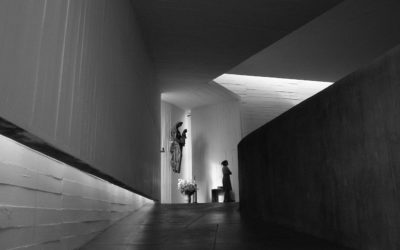The health crisis we are experiencing has caused a series of changes in most professions and occupations. One of the most dynamic, despite the state of the world, has been the area of construction and architecture. It must be considered that the construction sector is one of those that has not stopped (for a long time) its activity during the months of confinement or quarantine in several countries of the world. To continue operating, this sector had to comply with the requirements of security measures to combat the virus, given worldwide by each of the governments, which in most cases have made work difficult to carry out. In most cases, personnel have had to be reduced and with this, production times and costs have been lengthened and increased.
It is also true that this sector will be more affected in the coming months after the health crisis, because the works that continue to be carried out at the moment are those that had already been carried out before the quarantines were established. That is, it is possible that fewer urban and architectural construction projects are carried out and that projects in the luxury real estate sector (beach houses, country houses, recreation, etc.) decrease due to the fact that clients are unable to travel to visualize the physical realization of the property of their dreams. That is a reality that already the sector and its professionals: architects, designers, project managers, engineers and others have to deal with, using solutions remotely -even before the pandemic- and establishing themselves with remote work, at a distance or telecommuting in these months of social isolation.
Architectural firms, study centers and independent designers have been able to learn more during these months in their respective countries about the use of computer tools such as applications and programs that facilitate task management, being registered and shared to be consulted by any member of their respective teams. This has facilitated communication with them, but also with their internal and external customers, especially thanks to the videoconferencing. More sophisticated equipment with more sophisticated tools have even enabled them to make visits of the buildings remotely, through videos and photos, thus solving doubts at the time of the engineers or workers in charge, saving time and travel costs.
It seems that the use of technology in the construction world has been used forever, but the truth is that, in the last 75 years, productivity thanks to the use of technology has increased up to 1,500% in the fields of construction. agriculture, manufacturing and retail sales, but not so in construction, which remained almost the same. For this reason, in this XXI century a new field called “Construction Technology” (ConTech) arises that aims to bring the world of construction and architecture (and therefore design) to automation (application of machines or automatic procedures in the realization of a process or in an industry).
One of the best-known technological advances in the world of architecture and construction today is Building Information Modeling (BIM). Building information modeling is the process of generating and managing data in a building using real-time, three-dimensional dynamic modeling software to reduce the loss of time and resources in design and construction. BIM as a tool can help project managers, designers or architects to make better decisions at each stage of construction, and in these times of coronavirus it increases safety in the workplace by avoiding social contact.
And what will the buildings be like in the future, in the coming years? Specialists in the field point out that the trend will be multifunctional spaces for homes and offices, and environments with optimal hygiene conditions for public areas. For this, the use of technology in the war against the contagion of the virus will be essential, one of the protagonists being home automation, which is understood as the set of automation techniques that allows the optimization of electricity, safety and comfort in housing complexes which will facilitate access, and in turn, will help slow the spread of the virus on solid surfaces.
While public buildings should have wider spaces, and digital access control mechanisms such as facial recognition and automatic switches to avoid physical contact and unnecessary objects. Entertainment centers and free spaces such as bars, restaurants, discotheques, cinemas, theaters, parks, stadiums, etc., must have a health certificate and abide by biosafety protocols to implement new constructions in accordance with these new times.
The Australian architect Liam Young writes in his essay: « The buildings where we keep the world» included in the book Where the city ends (Arquine, 2019): “Each era has its own iconic architectural typology. The dream commission was once a church, modernism had its factories, as well as housing. During the last decade we celebrate the museum and the gallery. Now we have the data center…” And we wonder what kind of architecture after the health crisis will become an icon over the years… we will find out
Sources:
Archdaly: Versatility through object parameterization
Rebuild: Using technology in construction
Enrique Freyre SAC: 6 tips for managing remote construction sites






0 Comments